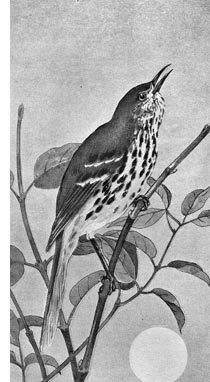Bird house suggestions
 House birds differ decidedly in their requirements. For those which usually excavate homes for themselves, the diameter of the entrance and the depth and diameter of the cavity must be in accord with their specific standards. Some birds are satisfied with almost any sort of a lodging.
House birds differ decidedly in their requirements. For those which usually excavate homes for themselves, the diameter of the entrance and the depth and diameter of the cavity must be in accord with their specific standards. Some birds are satisfied with almost any sort of a lodging.Bluebirds and wrens, for example, are content to build in tomato cans, although chickadees and nuthatches disdain them. Wood is a better building material than metal or earthenware. Entrance holes should be countersunk from the outside to exclude rain. Heads of nails and screws should be set rather deeply and covered with putty.
All houses should be easy to open for cleaning. A perch at the entrance is unnecessary and may even be an objection, as it is frequently used by English sparrows while they twitter exasperatingly to more desirable occupants.
To provide for proper ventilation a row of small holes is sometimes bared just beneath the eaves, but there should never be a ventilating hole lower than the entrance, and joints should be made tight, as drafts of air are dangerous. In case there is danger that rain may be driven in through the door; a small drainage hole, which will be covered by the nest, may be made in the middle of the floor.
The appearance and durability of houses are improved by a coat of paint. A neutral shade of green or gray is suitable far houses mounted in trees, while those on pales, being conspicuously placed, lend themselves harmoniously to the landscape when painted white.
The dimensions of nesting boxes shown in Table 1 are taken from the experience of successful builders and from measurements of woodpecker holes.